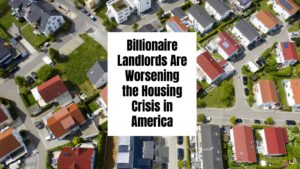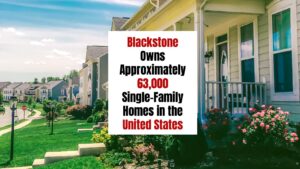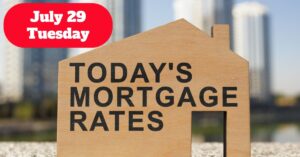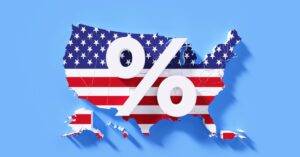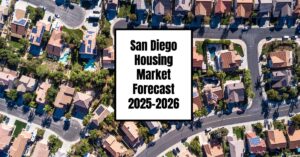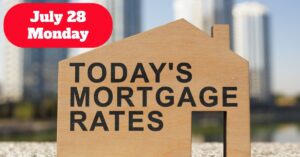Are you struggling to find an affordable place to live? You're not alone. Billionaire investors are supercharging the housing crisis, making it even harder for regular people to find decent, affordable homes. This isn't just a feeling; it's backed up by serious research.
This isn't some abstract economic theory; it's affecting real people's lives, right here, right now. Millions are struggling with skyrocketing rents, and finding a home to buy feels more like winning the lottery than a simple life goal. This article will explore how billionaire investors are impacting the housing market and what we can do about it.
Billionaire Investors Are Worsening the Housing Crisis
How Billionaires Are Fueling the Housing Crisis
A recent report from the Institute for Policy Studies (IPS) and Popular Democracy shines a light on how wealthy investors are making the housing crisis worse. Their 71-page report, Billionaire Blowback on Housing, shows that billionaires aren't just passively involved; they are actively driving up prices and squeezing out everyday people. They're treating housing as a commodity, not as a human right. This is not a new issue. This has been going on for years, and it’s only getting worse.
The report highlights several key ways billionaires worsen the housing crisis:
- Buying up massive amounts of housing: Think of Blackstone, the world’s biggest corporate landlord. They own hundreds of thousands of homes and apartments. This kind of concentrated ownership removes housing units from the regular market, decreasing supply and boosting prices.
- Leaving units vacant: In some areas, the number of vacant homes owned by investors exceeds the number of homeless people. This isn't an accident; it's a deliberate strategy to drive up value. Imagine the impact: empty homes sitting while people sleep on the streets.
- Raising rents: These massive corporations don't often have the same concern about providing affordable, well-maintained housing as smaller landlords. They often increase rents far beyond what is affordable. This tactic pushes even more people into financial instability.
- Neglecting maintenance: There are reports of corporate landlords neglecting repairs and property upkeep, leaving tenants in unsafe or uncomfortable living conditions, while focusing purely on maximizing profits.
- Targeting low-income communities: The report states that corporate landlords tend to focus their investment in lower-income neighborhoods and communities of color, which already face significant challenges. This concentrates problems and prevents diversification.
Recommended Read:
Housing Crisis Explained: Will Gen Z Ever Afford to Move Out?
The Numbers Don't Lie: The Impact of Billionaire Investment
Let's look at some of the stark realities that the report presents:
- Record Homelessness: In 2023, over 653,000 people were experiencing homelessness in the US. This is a record high and a humanitarian crisis.
- High Rent Burden: Half of renters spend over 30% of their income on rent. This is unsustainable for many, and just a slight rent increase can become an immediate crisis.
- Huge Gap Between Income and Housing Costs: The difference between what people earn and what it costs to buy a home has drastically widened. Homeownership is simply out of reach for most people.
- Millions of Vacant Homes: The report highlights the irony of 16 million vacant homes in the U.S. – enough for every single homeless person to have a home and still have millions left.
More Than Just Supply and Demand
The real estate industry often blames the housing crisis on a simple supply-and-demand issue, suggesting that building more housing will solve the problem. But the IPS/Popular Democracy report strongly argues that this is only a part of the picture. The vast number of vacant properties shows that simple supply alone doesn't define the problem. Billionaire investment is a crucial factor driving up prices and making housing unaffordable. This isn’t just about supply; it's about who controls the supply.
The Report's Main Argument: A Broken System
The authors of the report argue that the current system allows billionaires to profit from housing scarcity, creating a crisis that hurts everyone but themselves. They see the market as rigged against regular people, prioritizing wealth accumulation over community wellbeing.
What Can Be Done? Solutions for the Crisis
The report suggests several potential solutions, addressing both the national and local levels:
National-Level Solutions:
- Expand Social Housing: This means creating more government-funded or non-profit-run housing, ensuring affordable housing options for everyone, regardless of income.
- Tax Billionaires and Luxury Properties: The report recommends imposing taxes on the ultra-wealthy and high-value properties to fund social housing. This would shift the burden of funding affordable housing from those who need it most to those who can most afford it.
- Regulate Predatory Real Estate Practices: Stronger regulations are needed to prevent rent gouging, evictions, and other exploitative practices.
Local-Level Solutions:
- “Housing First” Programs: These programs prioritize providing permanent housing to the homeless, rather than focusing on addressing the causes of homelessness first. This can get people off the streets quickly.
- Limit Corporate Ownership of Housing: Local governments could restrict the amount of housing that corporations can own, or require transparency, making it harder for them to secretly buy up large areas.
- “First Option to Buy” Ordinances: This would give current renters the right to purchase their homes if their building or community goes up for sale.
- Prohibiting Long-Term Vacancies: Local ordinances could fine property owners who leave units vacant for extended periods, encouraging them to rent out available properties.
- Establish Local Social Housing Offices: Dedicated offices could focus on developing affordable housing options with input from communities and tenant groups.
Personal Thoughts and Conclusion
Having followed this issue for some time, I firmly believe that the report’s findings are accurate and deeply troubling. The concentration of wealth in the hands of a few is creating a humanitarian crisis. We need systemic changes, not just band-aid solutions.
We're not just talking about economics; we're talking about basic human rights – the right to a safe, decent, and affordable place to live. Ignoring the problem only benefits the ultra-wealthy. The time to act is now, and we all have a role to play. We need to speak up, demand change from our leaders, and support organizations working to combat this injustice.
Recommended Read:
- Will Federal Cap on Rent Hikes Solve or Worsen Housing Affordability?
- Will Housing Affordability Improve in 2024?
- Biden's 5% Rent Cap Plan Will Provide Relief for Renters Amid Housing Crisis
- Best Time to Buy a Home in 2024 is From Sept 29 to Oct 5
- Best Time to Buy a House in the US: Timing Your Purchase
- Should I Buy A House Now Or Wait Until Later 2024? It a Good Time?
- Is Now a Good Time to Buy a House with Cash
- Is It a Bad Time to Buy a House?
- Is it a Good Time to Buy a House in California in 2024?
- Is It a Good Time to Sell a House or Should I Wait in 2024?
- Is Now a Good Time to Invest in Rental Property (2024)?
- Is 2024 a Good Time to Buy an Investment Property?
